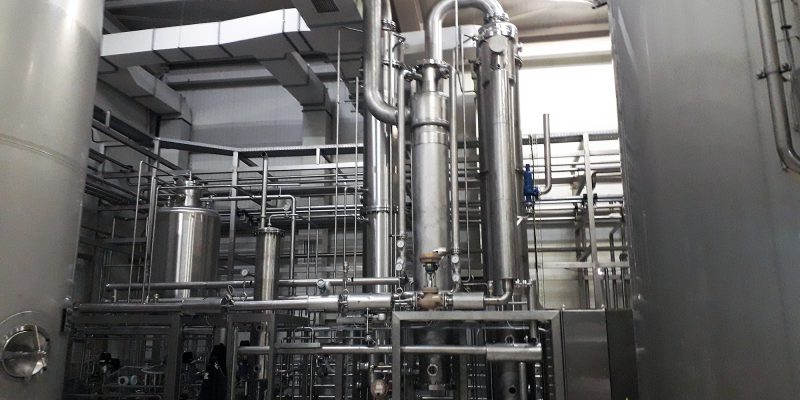For years most North American drinkers and brewing industry experts viewed the non-alcoholic (NA) beer sector as a distant afterthought, if they considered it at all. Given the bland flavour profile and absence of buzz-related effects the limited number of NA beers available lacked appeal.
Those days may be coming to an end. More major breweries have launched NA offerings recently, including Anheuser-Busch Inbev (Budweiser Prohibition and others), Heineken (0.0) and Carlsberg (0.0). At the same time, Wellbeing and Athletic, two U.S. craft breweries, have focused solely on brewing a range of low-calorie NA beers.
This production increase comes as more people seek healthier drinking options. GlobalData, a research firm, notes that growth in the low- and no-alcohol beer sector has outpaced growth in the broader beer category, and 37 percent of consumers stated they plan to reduce alcohol consumption.
What breweries should think about when thinking about adding NA beers
Though the overall NA category remains very small in the U.S. – approximately 0.3 percent of off-premise sales, according to Brewbound – consumer behaviours and recent trends may prompt more breweries to consider adding no- or low-alcohol options.
However, jumping into the NA game is not as simple as learning to brew the latest hot style. After making a careful consideration as to whether NA beers fit into its overall brand, a brewery must take into account the technology options available to make this product. Some of these options involve a significant capital investment, and there are production challenges that come with brewing and distributing NA products.
“Non-Alcohol beers are a unique product with unique challenges,” said Hugo Patiño, director of technical services at First Key. “Although there are options that require no capital investments, their flavour profile typically requires improvement. More capital-intensive options tend to produce a better flavour, but with the added challenge to the profitability of the product”
The process
The major production changes and challenges can be summed up with the following words: cost, space, waste and taste.
To make a standard lager, for example, many commercial breweries will start by brewing a high-gravity batch that is then adjusted to the desired alcohol content for packaging. For NA beers, breweries must add another step – dealcoholization.
To achieve that goal, the full strength beer is typically run through a process using membranes or distillation to remove the alcohol. No matter the technique chosen, even small-batch dealcoholizers are a significant investment. Although technology is improving and more simplified options are available, a brewery will likely spend six figures or more (US$) to purchase and install a new system.
After making the decision to add a dealcoholizer, the brewery must determine the most efficient and effective location for the system. Dealcoholizers can process anywhere from five to 100-plus barrels of full-strength beer an hour. As a result, a brewery may want to add one or more holding tanks dedicated for beer scheduled to be dealcoholized, keeping brite tanks open for standard production uses.
Of course, the dealcoholizing process also creates a by-product – alcohol. The alcohol stripped from the beer can be very pure and potentially flammable. Breweries need to safely treat this waste, taking care to follow all applicable regulations, which can vary locally.
“Adding low- or non-alcoholic beers to your menu may make a lot of sense for some breweries,” said Rod Waite, head of engineering services at First Key. “With all that goes into the process, though, we caution breweries to be very thoughtful about how they set up the system so they can achieve maximum efficiency and quality.”
A very different option to alcohol removal is the use of a process that limits the production of alcohol. This involves restricting the formation of fermentable sugars in mashing, “arresting” (i.e. stopping) the fermentation by using very low fermentation temperatures, and even using a different yeast strain. In this option, the final product will be rich in residual extract, making it more susceptible to microbial breakdown and often creating the need to pasteurize the packaged product.
The quality
Consumers care much more about the taste than the process, which is one reason NA beers have not sold well to this point. To produce the first versions of NA beer brewers would either use the arrested fermentation approach or strip out the alcohol at high temperatures. These options could reduce the beer down to 0.5 percent alcohol by volume (ABV) or less (the common legal requirement for a beer to be considered NA), but it also either failed to create enough desirable flavours or removed these to a point that its drinkability was far from ideal.
Rudolf Körner is the manager of dealcoholization technology for Centec, a maker of brewing equipment. In the early 1990s he led one of the first dealcoholizaiton pilot projects at a commercial brewery when he teamed with Germany’s famed Weihenstephan Brewery to produce NA beer.
Körner has been at the forefront of dealcoholization technology changes that have improved brewers’ ability to recapture key aromas without reintroducing alcohol. The improved quality has led to growing NA beer sales in Europe – particularly Germany and Spain – where the style has long been more popular.
Many factors go into whether a brewery wants to produce zero alcohol beer or legally NA beer (0.5 percent or less). Either way, Körner said ongoing improvements in aroma capture will help add stability and flavour to NA products.
These improvements should also lower the cost of entry, opening the door for more breweries to offer NA products. Though it may be easier to get into this rising sector, those breweries that are most thoughtful in their planning and execution will likely have the best chance for success.
By Mike Tysarczyk



